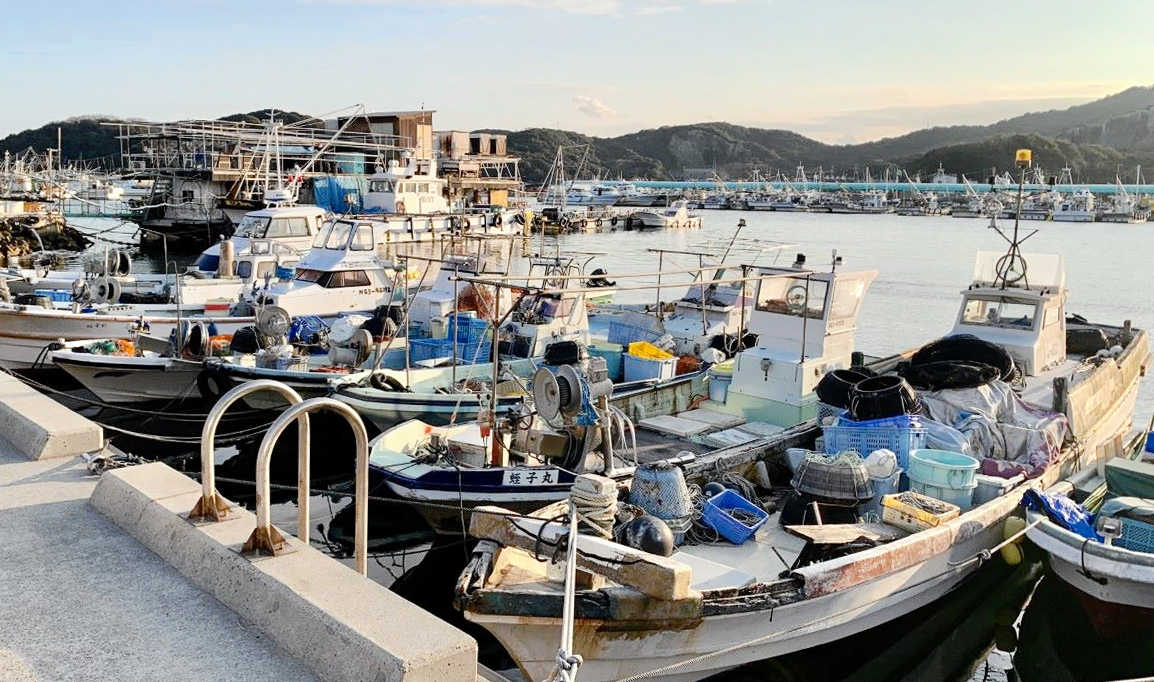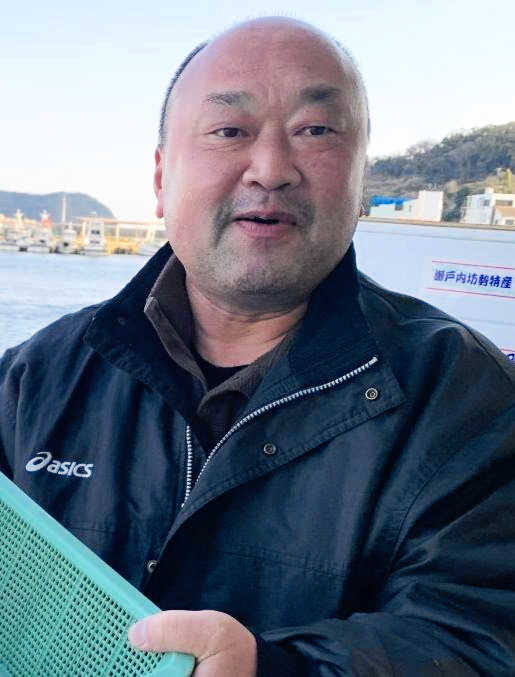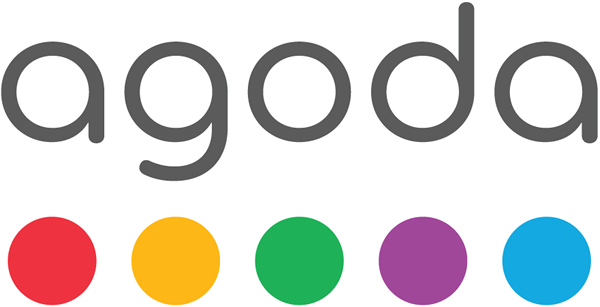Boze Crab A Prize Catch From the Harima-Nada Sea

Fishing boats lined up all the way to the opposite shore, Boze, Ieshima, Himeji City
Lines of trawlers return to the harbor in the evening and the bounty of the Harima-Nada Sea is pulled to shore, one catch after another. Spiny red gurnards, pufferfish, green tiger prawn... Among the rows of baskets filled with the gifts from the sea, we see the prize catch. Boze crab : this brand name is given to the few gazami crabs (swimming crabs) with a body of 18 cm or more and they are immediately tagged after being brought in.
Number One in the Nation, 841 Fishing Boats

Bozejima, blessed with a good natural harbor, Ieshima, Himeji City
Of the 40-odd islands of the Ieshima archipelago, Bozejima has the second largest population, right after Ieshima. There are approximately 2,000 residents with 70% of them engaged in fishing or fishing related activities. And with 841 fishing boats, the island boasts the largest number of fishing boats in Japan as a single fishing port by far.
The fish caught there, such as boze saba (mackerel) and Japanese sand lance, are specialties of the island. They are not only sold at markets around Japan, but also the islands’ “Dekaisen” direct sales market (boat used by fish brokers to buy fresh fish) and the "Himeji Maedore Market" located at the Mega fishing port on the opposite shore.
Swimming 20-30 Kilometers a Day
Male and female boze crabs are caught in different seasons. Females are caught in winter when they’re full of meat and their roe (eggs) is of high quality. Males are caught from July to October through crab gill net fishing. Ryoichi Uenishi, who has been crab fishing with gill nets for 40 years, sets them up while keeping the crabs' migratory paths in mind, “Crabs come from the western side of the Seto Inland Sea. From Okayama, they travel through the Harima-Nada Sea and head towards Osaka Bay.”
Unlike snow crabs and other crabs in the Sea of Japan, gazami crabs swim like fish. There are reports of them moving 20 to 30 kilometers per day. Mating season falls in summer and autumn, when the males, on the move in search of females, run into the nets and are caught. The mesh holes can be as large as 15 cm and some fishermen even use 18 cm nets.
Re-releasing Egg-Bearing Gazami Crabs

“Gazami Fuyaso Kai” membership application flier
The gazami fishing industry in Hyogo is highly regarded throughout Japan as a pioneering effort in fisheries engaging in natural resource management. First started by volunteer fishermen in 1986, the "Gazami Fuyaso Kai", or “Let’s Increase Gazami Crabs Organization” (Secretariat, Hyogo Prefecture Federation of Fishermen's Cooperative Association), has continued its efforts to have "egg-bearing gazami" females re-released just before they spawn over the years. Egg-bearing gazami crabs caught between May and September are returned to the sea with the words "Do not catch," the area where they were first caught, and a number written on their shell. The fishermen are still paid as if they had been purchased.
The annual membership fee is 1,000 yen, and not just the fishermen, but those from the general public who agree with the conservation goals are also welcome to join. In addition, regardless of the time of year, young crabs with shells less than 12 cm wide and soft crabs that have just molted are voluntarily released back into the sea.
Shrimp and Crabs in Sharp Decline
In an effort to brand gazami crabs, which are inexpensive at 500-600 yen each, the company began tagging them, like snow crabs, with a "boze crab" tag around 2004. In January of last year, they also obtained a regional collective trademark. However, despite these efforts to protect gazami crabs, their numbers have declined sharply in recent years. Noriyuki Uenishi, a counselor of the Boze Fisheries Cooperative Association, emphasizes the urgency to act, “In 2021, we only caught 3-4 tons, compared to 96 tons in 2007. We finally obtained a regional collective trademark, but if things continue as they are, the crabs will become nothing more than a phantom of the past.” According to Kaminishi, this “concerning rate of decline” is seen not just in crabs, but also among shrimp, mantis shrimp, and other hard-shelled marine crustacean creatures.
Pesticide Concerns


different from that of other fish.”, Boze, Ieshima, Himeji City
Factors contributing to the sharp decline include a lack of nitrogen and other elements due to increased wastewater regulations and rising water temperatures from climate change. These have also led to fading color in seaweed, poor catches of Japanese sand lance, and oligotrophic growth (reduced organic matter in seawater). However, Kaminishi is also concerned about another factor: the impact of neonicotinoid pesticides. The effects of neonicotinoid pesticides on living organisms came to attention when it was discovered that they were linked to the mass deaths of honeybees that have occurred around the world.
The reason Kaminishi is concerned is because crustaceans, such as shrimp and crabs and insects, are closely related biologically in the world classification, and their body structures are similar. Ryoichi Kaminishi, the aforementioned fisherman, points out, "Unlike the Pacific Ocean and the Sea of Japan, which have large currents, the Seto Inland Sea is like a container where water continuously circles.” Similar voices have been raised by other regions, and the Hyogo Prefecture Federation of Fishermen's Cooperative Association has requested the prefectural government to study the impact of the pesticides.
When I was a young reporter, I covered the Nada Fighting Festival and other autumn festivals along the coast of Harima-Nada, where piles of boiled mantis shrimp were served on large platters. Nowadays, you rarely see them sold anywhere.
Japan is one of the world's largest users of agricultural chemicals, including herbicides. Some places, such as Tajima, known for stork-friendly farming methods, and Sado in Niigata, where Ibis and ecosystem-friendly rice field farming is spreading, have banned neonicotinoids, but Japanese national regulations are still extremely lax. The European Union has strengthened its efforts as a "precautionary principle" and banned the use of these pesticides as highly hazardous to ecosystems and humans.
Our Seto Inland Sea is a closed area where any chemicals from the products we use in our daily lives and economic activities tend to remain behind for long periods of time. We should all make the effort to be more aware of the kinds of chemical substances we are using to avoid losing the bounty of the sea we have inherited from our ancestors.
Written by Kazuyoshi Tsujimoto, Manager of Corporate Planning Department, Senior Staff Writer at The Kobe Shimbun (Daily Newspaper)
This article was first published on 2nd February 2023 in The Kobe Shimbun as part of a series entitled "Wind, Water and Earth...Hyogo's Terroir"
Date : 2024.05.29



